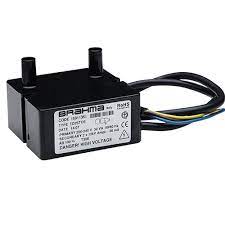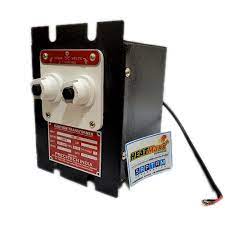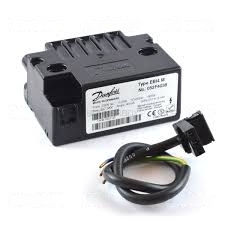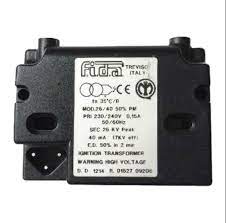Ignition Transformer





Ignition Transformer
An ignition transformer is a vital component in heating systems and combustion equipment, designed to generate a high-voltage spark or arc necessary for igniting the fuel-air mixture in a burner. Here’s a detailed breakdown of its function, construction, and applications.
Function:
Voltage Transformation: The primary role of an ignition transformer is to convert low-voltage electrical power from the supply line (usually 120V or 240V) into a high-voltage, high-frequency output. This high voltage creates the necessary spark at the ignition electrode in the burner system.
Ignition Source: The transformer’s output voltage is used to produce a spark that ignites the fuel-air mixture, initiating the combustion process in systems like oil burners, gas burners, and other combustion equipment.
High Voltage Output:
Ignition transformers typically output between several thousand to tens of thousands of volts. Common ignition transformers can generate 10,000V to 15,000V or higher, depending on the system requirements.
This high-voltage output is crucial to ionize the air and create a powerful spark that is capable of igniting the fuel-air mixture within the burner chamber.
Construction:
Primary and Secondary Windings: The transformer consists of a primary winding (connected to the low-voltage power source) and a secondary winding (which produces the high-voltage output). The ratio between the windings determines the voltage transformation.
Core: The core of the ignition transformer is usually made of ferrite or another magnetic material, which helps in efficiently transferring electrical energy between the windings.
Durability: Ignition transformers are built to be compact and durable, capable of withstanding high temperatures and the challenging environments found in burner systems.
Ignition Electrodes:
Spark Gap: The ignition transformer works in conjunction with ignition electrodes, which are positioned inside the combustion chamber. The high-voltage spark jumps across the electrode gap, creating the ignition spark necessary for combustion.
Critical Role: The accuracy of the electrode positioning and the size of the spark gap are crucial for reliable ignition.
Safety Features:
Overload Protection: Many ignition transformers are equipped with overload protection to prevent electrical damage in case of system faults. This ensures reliable ignition and protects the system from failure or damage due to overheating or overvoltage.
Insulation: The transformer is designed with robust insulation to prevent electrical leakage, ensuring safety in harsh operating conditions such as high temperature and moisture.
Applications:
Boilers:
Ignition transformers are widely used in industrial and residential boilers, providing the high-voltage spark needed to ignite natural gas, propane, or oil.Furnaces:
Furnaces in home heating systems rely on ignition transformers to spark the initial combustion of natural gas or oil.Industrial Burners:
They are critical in industrial burners across sectors like manufacturing, where precise and consistent combustion processes are required for production.
Maintenance:
Regular Inspections:
Periodic maintenance and inspections are essential to ensure the ignition transformer functions properly. This includes:- Checking for wear and tear on the electrical components.
- Inspecting the condition of the wiring and connections.
- Replacing the ignition transformer if it shows signs of failure, such as weakened spark output or inconsistent performance.
Cleaning:
Keeping the electrodes and surrounding components clean is important to avoid carbon buildup that can interfere with spark generation.
Manufacturers:
Well-known manufacturers producing high-quality ignition transformers include:
- Danfoss
- Fida
- Cofi
These companies are recognized for providing reliable, high-performance ignition transformers that are widely used in the heating and combustion industry.
Ignition transformers play a critical role in starting combustion processes in heating systems. By transforming low voltage into high voltage, they ensure the fuel-air mixture is properly ignited. With applications spanning from boilers to industrial burners, ignition transformers are essential for the safe, efficient, and reliable operation of combustion equipment. Proper maintenance, such as regular inspections and cleaning, helps extend the life and performance of these devices.